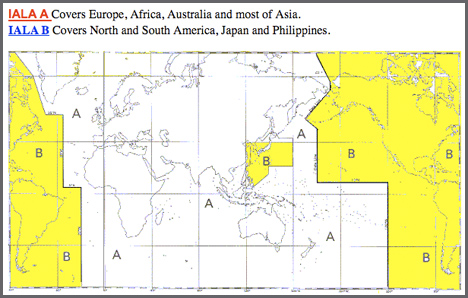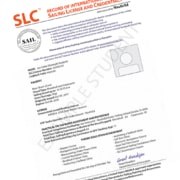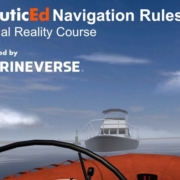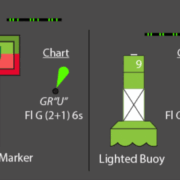A few rules and signs and lights to learn when sailing
Once you’ve decided that you like it and you now want to learn to sail for yourself, there are just a few things to learn, actually quite a lot but don’t be intimidated – we all started sailing somewhere – sometime.
The rules of right of way can be a bit daunting so that’s why we created the FREE rules of right of way course for all. Below, however, is a graphic that anyone can use for learning the ATONS (aids to navigation). But the point to be careful of is that for the America’s it’s backward from the rest of the world or is the rest of the world backward? I guess it’s 250 million against the rest right? Actually a few more votes on the American side. Here’s the map.
The IALA-B system is used by North-Central and South America, Japan, and the Philippines. The rest of the world uses the IALA-A system.
IALA stands for the International Association of Marine Aids to Navigation and Lighthouse Authorities. There are just two systems IALA-A and IALA-B which operate in different parts of the world. This should be of particular note to those going chartering in various parts of the world. The essential difference is that the colors (colours) are swapped for entrances into harbors. The reason is said to be that the Americans during the war for independence wanted to confuse the British ships and so swapped the colors.
But you absolutely must learn these when learning to sail. But don’t worry they are easy. All you have to do is remember this “Red, Right, Returning” under the IALA-B system (North-central and South America and Japan and Philippines). That’s it! IE when you are returning from sea into the channel (or going upstream) keep the red markers on your right. In the case of the preferred channel take notice of whatever color is on top, that is, if red is on top then keep the marker on your right for the preferred channel. Red Right Returning! Right?
Confused? Well count yourself lucky living in today’s times – there used to be some 30+ systems until the IALA group was formed.
If you liked this article, please Share it or Digg it below. It helps spread the word of NauticEd.








